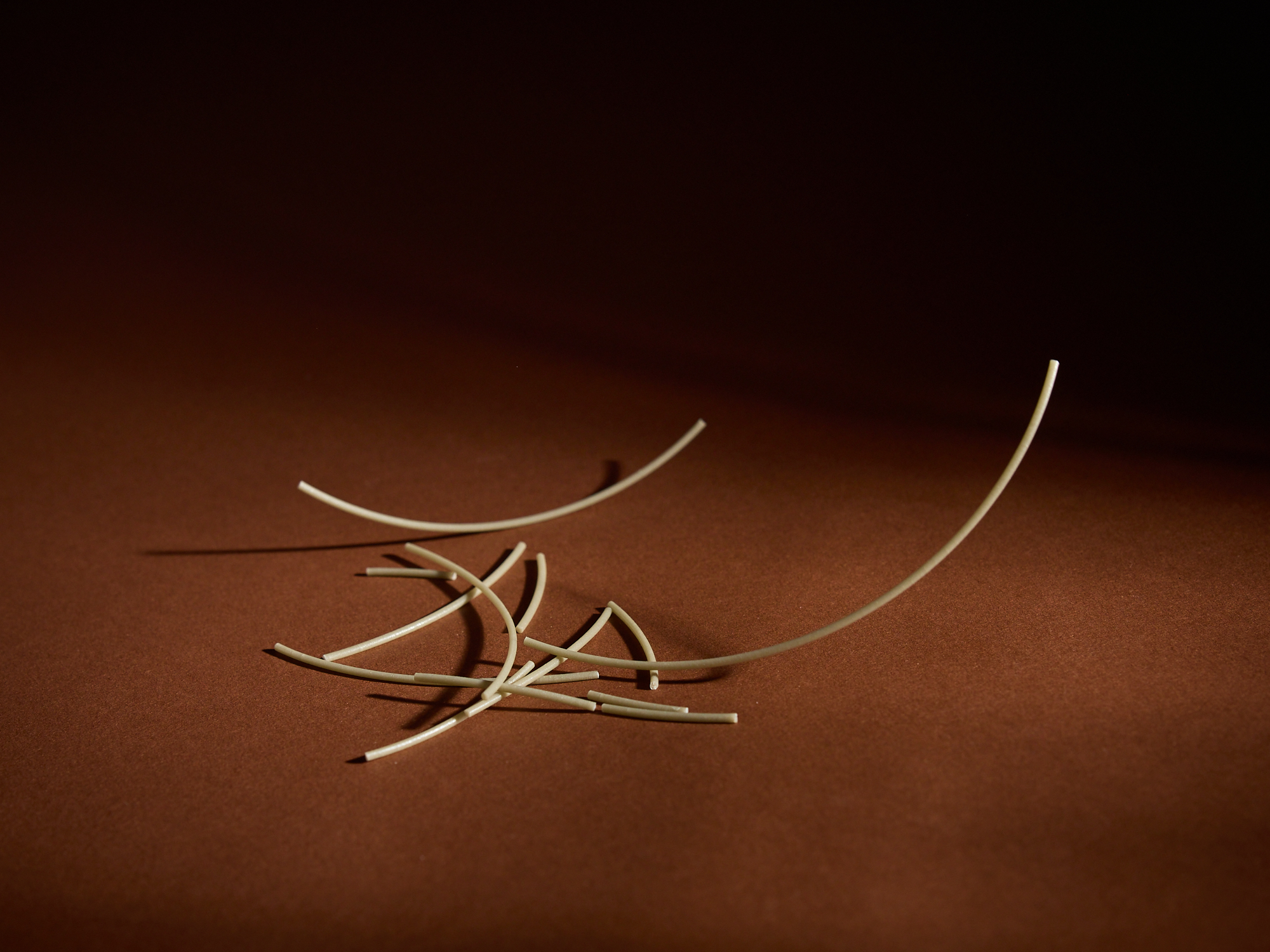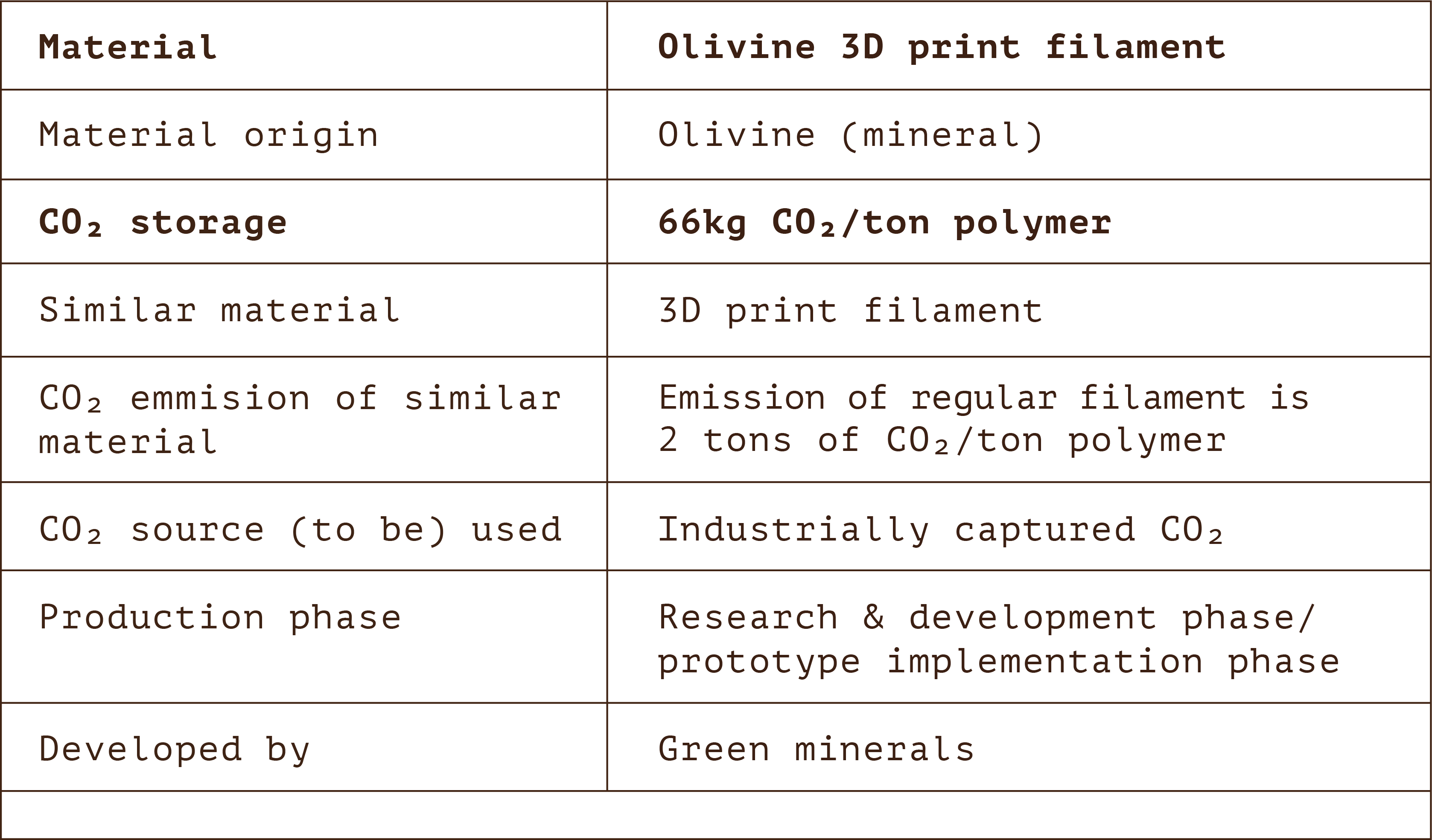![]()
![]()
Olivine 3D Print Filament
This 3D print filament draws on the natural CO2-sinking properties of the mineral olivine and captures 66kg of CO2 per tonne of polymer.
Plastic polymers are an incredibly common type of material. They consist of a very large molecule formed by a repetition of smaller chemical units chained to one another. Unfortunately, a lot of polymers require large amounts of crude oil to be made. This is harmful to the environment and contributes to global warming.
Olivine is a mineral that has natural CO2-capturing properties. The polymer is made by using CO2 reacted Olivine. The carbon dioxide is directly captured from the emissions of the production plant. This revolutionary process avoids the pitfalls of conventional polymer production which releases 2 tonnes of CO2 for every tonne of polymer produced.
In the production process CO2 reacted Olivine is used to replace talc. Talc is a common additive used as a binding agent in the polymer manufacturing process. CO2-based polymers can be used to make environmentally friendly household appliances and consumer goods. For example in the future, our coffee machines, hoovers or toasters could be made from recycled CO2 with this new material.

